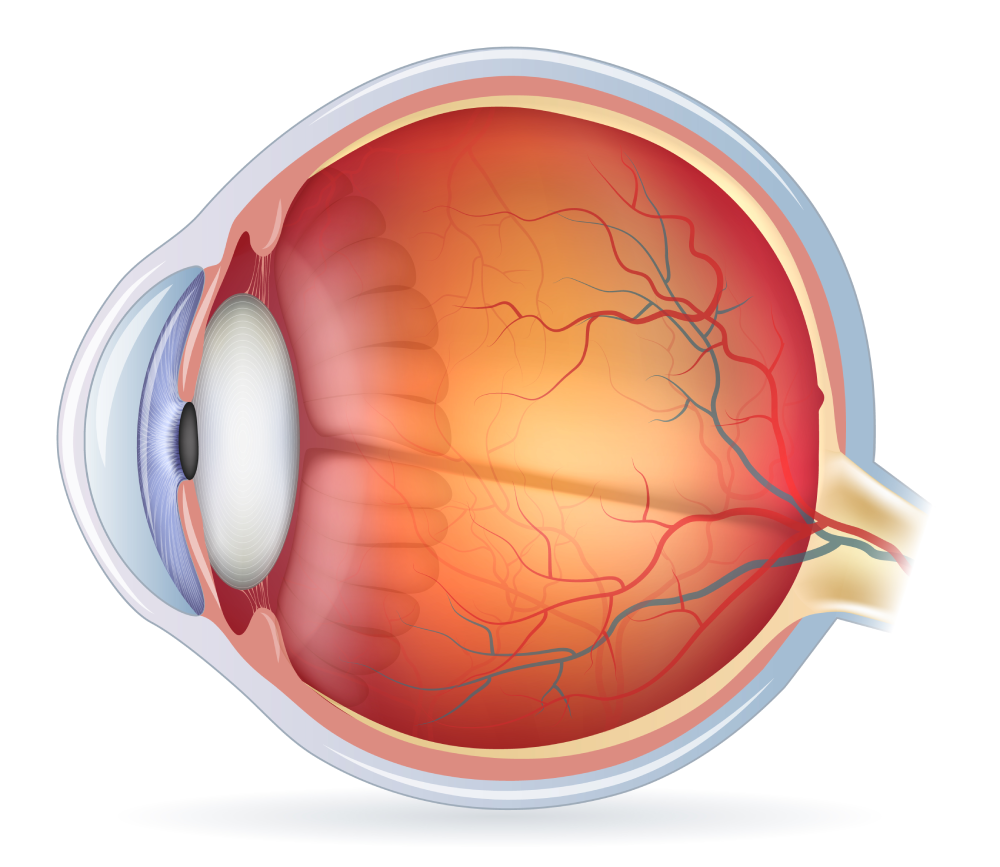
Eye surgeries can help fix many eye problems. Our eyes are very important. They let us see and understand the world. When our eyes are not healthy, we might not see well or at all. Doctors can perform different types of surgeries on the eyes to improve them.
Some reasons for these surgeries include fixing vision or treating injuries. In our blog, we will talk about why eye health is important, the usual reasons for eye surgeries, and what you can expect to learn as you keep reading.
Understanding the Eye and Its Functions
First, let's chat about the basic parts of the eye. There are many parts. Each part has a job:
The cornea is the clear part in front of your eye. You can feel it if you touch your closed lid softly.
The iris is the colored part of your eye. It shrinks or gets bigger depending on the light.
The lens is behind the iris. It changes shape to help make what you look at clear.
The retina is in the back of your eye. It has cells that see the light.
Next, how does the eye give us vision? Light hits the cornea first. The cornea and lens help focus the light. Then, it heads to the retina at the back. The retina acts like a movie screen. It catches the light and sends a picture to the brain through the nerve. It’s like watching a film in your head!
However, the eye could have some problems:
Cataracts can cause blurry vision. They can make it hard to see.
Glaucoma could damage the nerve. That can cause vision loss.
Macular Degeneration affects the center of your vision.
Dry eyes can make your eyes feel scratchy. You might feel like you have dust in your eye.
Eye Injuries can hurt various parts of the eye.
If you have any of these problems, don't worry. There are eye surgeries that can help fix them.
Cataract Surgery
A cataract is when the lens in your eye, which is usually clear, becomes cloudy. This makes it tough to see as you normally do.
When and why is cataract surgery needed?
Your eyesight gets really blurry, making everyday stuff, like reading and driving, hard to do.
Lights at night bother you more, making driving in the dark scary.
Bright lights and sunshine seem too strong and hurt your eyes.
Changing glasses doesn't help much anymore.
How do doctors fix it? In surgery, doctors remove the cloudy lens and insert a new, clear one. It's a quick process, usually taking less than an hour, and it's safe.
What happens after surgery? Most people can see much better after the surgery. Recovery is fast. In a day or two, you're up and back to most of your usual activities, though you might need to wear special glasses for a little while.
Eye surgeries like this help many people see clearly again. They are a common and effective way to tackle vision problems caused by cataracts.
LASIK (Laser-Assisted In Situ Keratomileusis)
LASIK is a type of eye surgery that can help people see better without needing glasses or contact lenses.
Who Can Get LASIK?
People who are tired of wearing glasses or contacts might think about LASIK. You should be over 18 and have healthy eyes, and your eye prescription should have stayed mostly the same in the last year.
How LASIK Works: A Quick Guide
1. Getting Ready: Your eye doctor will check your eyes and use a machine to map your cornea.
2. The Procedure: After numbing your eyes with drops, the doctor uses a laser to change the shape of your cornea slightly. This is done to correct your vision. The actual laser part only lasts for about 5 minutes for each eye.
3. After the Surgery: You might feel some discomfort, but you'll start noticing better vision within a day.
Pros of LASIK
Quick recovery
You might not need glasses or contacts after.
Cons of LASIK
Dry eyes or seeing halos around lights at night for some people
A small chance of vision problems that could need more treatment
LASIK is one of the popular eye surgeries for fixing vision issues, but it's important to talk to a doctor to see if it's right for you.
Glaucoma Surgery
Glaucoma is a condition in which pressure builds up in the eye. It can damage the eye's nerve and lead to vision loss. To prevent this, doctors might suggest surgery.
Different Types of Glaucoma Surgeries
Trabeculectomy: In trabeculectomy, doctors create a new path for fluid to leave the eye. This helps lower the pressure.
Laser Surgery: Laser surgery uses light to open up the drainage area. It's a quick and less painful way to deal with glaucoma.
Implant Surgery: Here, a tiny device is placed in the eye. This device helps fluid escape, lowering the pressure inside the eye.
Goals and Potential Complications
The main goal of any glaucoma surgery is to lower eye pressure, protect the optic nerve, and prevent vision loss. Like all surgeries, eye surgeries for glaucoma come with risks. Patients might experience infection, bleeding, or temporary vision loss. However, these surgeries have helped many people keep their sight.
Refractive Lens Exchange (RLE)
Some people may have eyes that incorrectly focus light on the retina. We call these focus problems "refractive errors." RLE, or Refractive Lens Exchange, is one of the eye surgeries that can fix such issues.
How Does RLE Work?
RLE is a surgery. A doctor removes the eye's natural lens and replaces it with a new, artificial lens. This new lens takes into account the patient's refractive error, correcting their vision.
RLE or Cataract Surgery: Which is Better?
You may know about cataract surgery. Cataract surgery also changes the eye's lens. But it mostly helps aged people. People whose lenses have turned foggy. People can see clearly after cataract surgery. But RLE helps more types of people. It fixes more than just foggy vision.
The Good Parts and the Bad Parts of RLE
The biggest advantage of RLE is clear vision. You may see better right after the surgery.
But, like all surgeries, RLE can have side effects too. You may get minor pain or an infection. But don't worry. Doctors can treat most side effects easily. Always consult with your doctor first.
Corneal Transplantation
The cornea is the front surface of the eye, a clear, dome-shaped surface. All the light that enters the eye passes through it, so the cornea is important for clear vision.
When Do You Need Corneal Transplantation?
If the cornea is damaged or diseased, it can cause blurry vision or loss of sight. In such cases, doctors suggest a corneal transplant. A healthy cornea from a donor replaces all or part of a patient's cornea.
Different Kinds of Corneal Transplants
There are different types of corneal transplants:
1. Penetrating Keratoplasty (PK): The whole cornea is replaced in this surgery. It's the traditional form.
2. Endothelial Keratoplasty (EK): Only the back layer of the cornea is replaced here. EK is a newer type of surgery.
3. Anterior Lamellar Keratoplasty (ALK): In this surgery, only the front and middle layers of the cornea are replaced.
What Happens After the Surgery?
The recovery from a corneal transplant can take a few weeks to several months. It might require eye drops and regular check-ups with the doctor.
The success rates for corneal transplants are high. Most people who have had the surgery have improved vision.
Remember, proper aftercare can make a big difference in the success of a corneal transplant. So, follow the doctor's instructions carefully.
Vitrectomy
A vitrectomy is one of the eye surgeries that doctors do to fix problems inside your eye. In simple words, it's a way to take out some or all of the vitreous. The vitreous is a clear, jelly-like substance inside your eye. Sometimes, it needs to be removed to help the eye heal and see better.
How is the Surgery Done?
The doctor makes tiny cuts in your eye and uses special tools to remove the vitreous solution. After that, they might fix other issues inside the eye. The surgery often takes no longer than a couple of hours.
When Do You Need a Vitrectomy?
If you have certain eye problems, such as retina detachments, big eye floaters, infections inside the eye, or serious eye injuries, you might need a vitrectomy.
After the Surgery
After the surgery, your eye might be swollen or hurt a bit, but it gets better with time. The doctor will tell you how to care for your eye. They may give you some eye drops and tell you to rest. It's important to follow their instructions so your eye can heal well.
Conclusion
Each eye surgery helps with different eye problems. Some surgeries replace a cloudy part in your eye with a new, clear one. Others shape your eye in a new way so you can see better. There are also surgeries to fix problems inside your eye or to replace a damaged front part of your eye.
It's very important to talk to an eye doctor if you think you need surgery. They can help you decide what surgery is right for you. Eye surgery has come a long way. Doctors can do a lot to help people see better. It's amazing how these surgeries can improve your sight and make everyday life easier. Remember, eye surgeries have helped a lot of people see the world more clearly.

 Specialty Contacts
Specialty Contacts Refer A Patient
Refer A Patient





